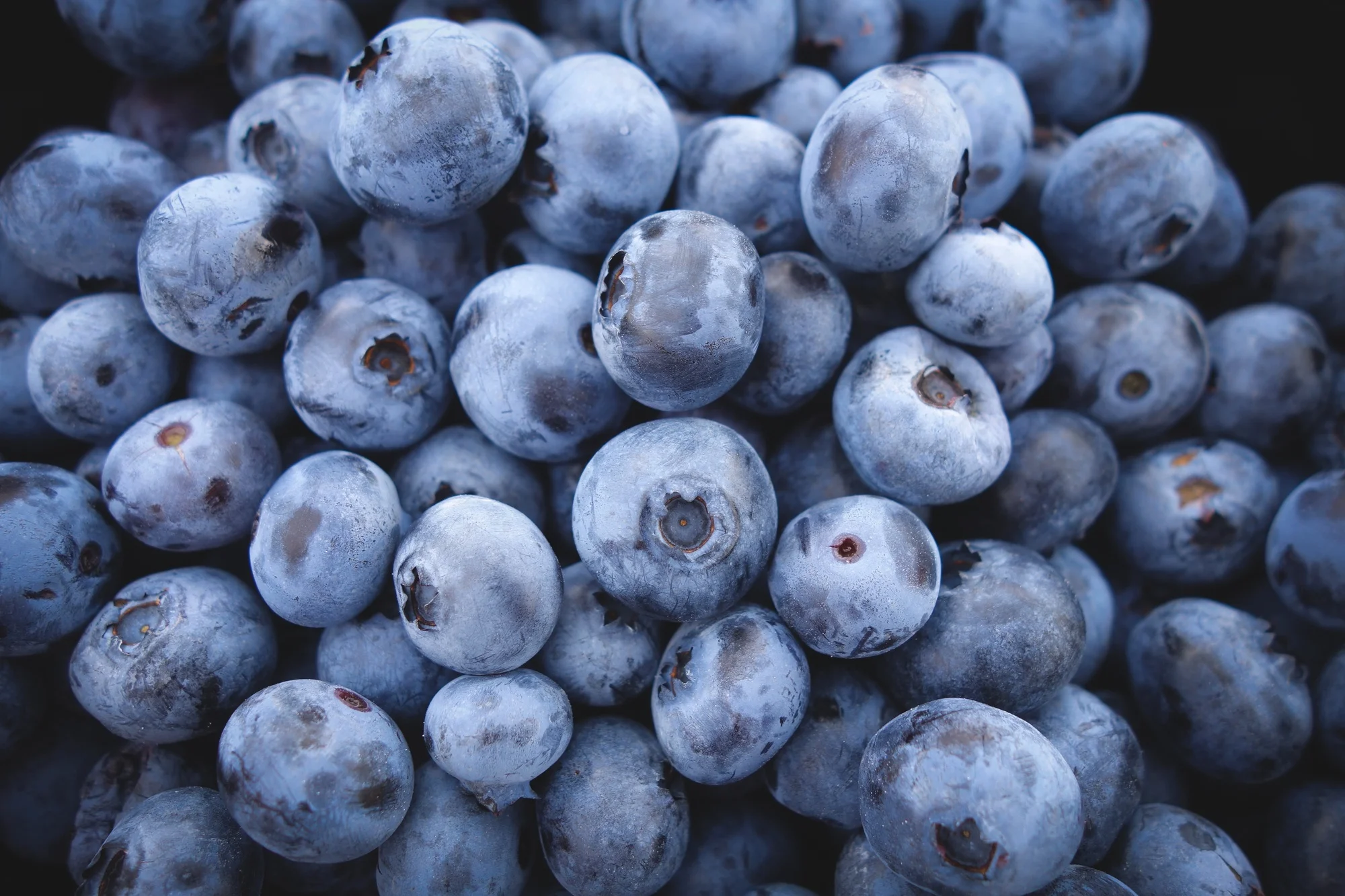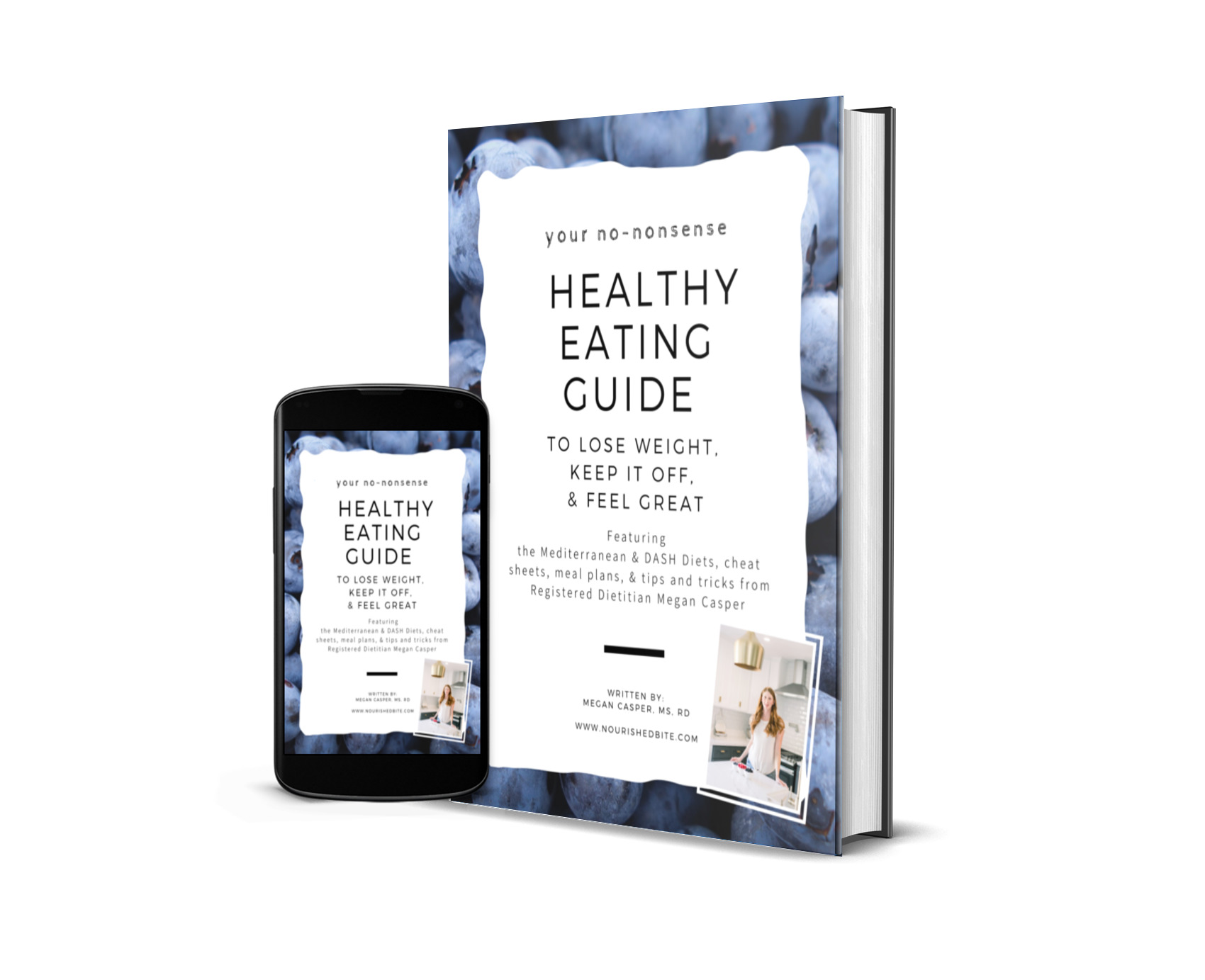Put Down the Salt Shaker: Here's How and Why to Eat Less Salt
/It’s recommended that we limit sodium intake to 2,300 milligrams of sodium per day, but it’s estimated that Americans eat more than a 3,400 mg each day! Sodium is hidden in many foods, so it’s very easy to go above our recommended daily sodium intake. Here are easy - and yummy - tips and low sodium alternatives to help you put down the salt shaker. Your heart will thank you!
What is sodium?
Sodium is a mineral, a nutrient, and an electrolyte, which means that it helps maintain the amount of fluid we have in our bodies. Sodium also helps with nerve and muscle function.
Why should I use less salt?
While using less salt is especially important for people with high blood pressure, a high salt intake puts you at risk for heart disease, stroke, and high blood pressure. Water follows salt in our bodies, so when we eat salty foods water is pulled into the bloodstream, raising blood pressure and putting an extra burden on our heart and cardiovascular system. A high salt diet also puts us at higher risk for osteoporosis, stomach cancer, kidney disease, and more. One in three Americans will develop cardiovascular disease, so it’s not too soon to think about your heart.
How to reduce salt in food:
Use herbs, spices and other yummy flavors: Herbs and spices have a whole host of amazing health benefits (check out my post about them here!) They’re a great way to boost your health and add flavor. Instead of adding salt:
Add parsley, dill, tarragon or thyme to eggs.
Toss in herbs like parsley, basil, mint, or cilantro to make a basic salad pop.
Add parsley, rosemary or dill to roasted or mashed potatoes.
Squirt on lemon, lime, or a dash of vinegar
Consider using salt-free seasoning blends or mixing up your own.
Double check your condiments: After you’ve cooked a low salt meal, make sure to double check condiments before splashing them on. Soy sauce, ketchup, barbecue sauce, salad dressings and other condiments all can contain heaps of sodium, so check your labels before drenching your plate. Look for lower sodium options or opt for a smaller portion.
Avoid processed foods: About 70% of salt consumed by Americans is from processed foods or when eating out. The main culprits include: bread and rolls, pizza, soup, cold cuts and cured meats, poultry, and sandwiches. Sodium can be surprisingly high in foods like cheese, nuts and seeds, frozen dinners, snack foods, condiments, and sauces. Make sure to check meat too - some has been “enhanced” or plumped up with salt filled saline solution, so if a chicken breast looks too large to be real, it probably is!
Read your labels: I’m a broken record about this, aren’t I? But the kinda crazy thing about sodium is it’s in food you’d never think it would be in. I personally was shocked when I heard how much was in bread!
Look for the percentage of sodium on the label, and then head on down to the ingredients list and look for salt (sodium chloride or NaCl, or anything else that mentions “sodium”), monosodium glutamate (MSG), baking soda and baking powder, and disodium phosphate. Look for unsalted, low-sodium or reduced sodium alternatives. Foods that contain 35 mg or less per serving are very low in sodium. Foods that contain 140 mg or less per serving are low sodium.Eat foods without labels: Gotcha! This is another way to say “avoid processed foods”, but it’s also another way to look at things. When touring the grocery store, stick to the edges. Fresh fruits and vegetables haven’t been processed or preserved with salt, while canned and frozen items have been processed and may have additives.
Eat out with a plan: While eating out it isn’t as easy to control what’s in our food as at home, but there are some ways you can lower salt intake on the go. Ask for olive oil and vinegar on salad to avoid salty dressings. Select foods that are fresh and minimally cooked or processed, like fresh salad greens versus a cooked side. Ask that your food be prepared without added salt and let them know your concerns. Graba to-go box at the start of your meal and eat a smaller serving.
Check out the DASH diet: The DASH diet stands for the Dietary Approaches to Stop Hypertension, and while this diet started out as a way to lower blood pressure, the diet also lowers the risk of heart disease, cancer and diabetes and can be a great way to lose weight. Eating a diet rich in fruits, vegetables and whole grains and low in added sugar, sodium and processed meats such as the DASH also helps slow aging. Previous to 2019, the DASH diet was ranked as the number one diet by the US News and World Report for 8 years in a row. I regularly recommend this diet to clients with all sorts of needs and backgrounds since it is healthy for all!
Swap out normal table salt: While this adjustment isn’t as big as many of the others, different types of salt do have different amounts of sodium, and adding a dash of salt at the table isn’t where we get the most salt in our diet anyway (unless you’re pretty heavy handed - I’m looking at you, mom.) Celtic salt and Himalayan salt contain less sodium than table salt, and they also have trace amounts of calcium, magnesium, and potassium. Larger grains of salt also contain less sodium per pinch.
Give yourself time to adjust: Just like many changes in life, it can take time to get used to them. Cut back slowly and allow your taste buds to get used to these new and wonderful flavors.



